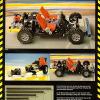
Portal hubs - a nail in their coffin
By
Leif, in LEGO Technic, Mindstorms, Model Team and Scale Modeling
-
Recently Browsing 0 members
No registered users viewing this page.

By
Leif, in LEGO Technic, Mindstorms, Model Team and Scale Modeling
No registered users viewing this page.